Pros and cons
Consider the advantages and disadvantages of a glass apron.
| pros | Minuses |
|---|---|
| Thanks to modern cleaning products, glass is easy to care for. | The high cost of the material. A glass panel is more expensive than tile or chipboard. |
| Installing a glass apron will take very little time. | The product requires dimensional accuracy. Its installation is carried out only after installing the headset. |
| Skinali allows you to realize any design ideas thanks to a huge selection of shades and patterns. | The apron is made to order and it takes time for its production and delivery. |
| The glass surface looks light and unobtrusive, so it will perfectly fit into any modern interior. | The glass panel looks out of place in classic and "rustic" styles (country, provence, shabby chic). |
You can learn more about its characteristics from this video:
What glass are they made of?
Each type of glass apron has its own characteristics. Let's dwell on them in more detail.
Tempered glass apron (stalinite)
The name of this material speaks for itself: during tempering, silicate glass is subjected to thermal action, and then sharply cooled, thereby achieving special strength and impact resistance.
- A stalinite wall panel installed above the worktop near the slab does not deform or scratch.
- The service life of such a product is more than 10 years.
- If the glass nevertheless breaks, then into safe pieces with blunt edges.
The photo shows tempered glass, which is not afraid of high temperatures and scratches from metal devices.
Kitchen apron made of triplex (laminated glass)
Such a product consists of two or three layers of glass glued together with a polymer film.
- Thanks to the film, any pattern or ornament can be applied to the panel. It also helps retain glass shards when damaged.
- The product is highly durable and resistant to high temperatures.
- A triplex product is much heavier (its thickness is 8 mm) and is more expensive. In addition, it takes more than two weeks to produce it.
The photo shows a purple triplex apron with a pattern, equipped with backlighting. It is in perfect harmony with the ceiling LED strip in lilac tones.
Plexiglass kitchen apron
The material is also called "acrylic" or "organic" glass. Consists of polymers and has both pros and cons:
- It is cheaper than natural glass and has less weight.
- Resistant to dirt, moisture and various microorganisms. Easy to care for, but do not use abrasive cleaners.
- Impact resistant, but easily scratched.
- On the panel, you can print any drawing or give the product any shade.
- You should not install the product next to an open fire, as the plexiglass does not withstand heating above 80 degrees.
The photo shows an unusual plexiglass panel with a bright floral print.
Polycarbonate apron
Cast polycarbonate is much more suitable for the role of a practical apron than plexiglass.
- Hardly scratches, but may become cloudy from hot stove.
- Resistant to moisture, easy to clean.
- It bends, so it can solve various design problems, and it is also easier to make holes for sockets in it.
In the photo there is a compact corner kitchen with a colored polycarbonate apron.
How to choose?
When choosing a glass apron, you should pay attention to some details:
- If you need a laconic and stylish apron to protect the wall, you should use a transparent panel that is not striking. The glass surface will help protect wallpaper or paint when you don't want to overload the kitchen interior with various textures.
- The standard height of the product is 60 cm, but there are manufacturers who can make a product of any size and shape.
- The panel can consist of several sheets or one whole one.
- The product is fixed either on special fasteners using through holes (transparent products are installed only in this way), or on liquid nails.
What else you should pay attention to when choosing a glass apron, you can find out in this video:
Interior design ideas
At first glance, glass may seem too simple, uncomplicated solution for the kitchen. But in fact, the variety of materials is amazing, and the advantages of glass help to translate any design idea into reality.
Backlit glass apron
Add a little lighting and the glossy glass surface will sparkle and transform the whole environment. The easiest way to make a backlight is to install a moisture resistant LED strip underneath your kitchen cabinets. It evenly and effectively illuminates the cooking area.
In the photo, the work surface is highlighted with a tape with a warm shade.
In addition to tapes, lamps or spotlights are successfully used. The most expensive option is the backlight built into special profiles. They are fixed at the top and bottom of the glass panel and give the impression that the wall panel itself is glowing.
In the photo there is a panel with a picture and illumination in the form of spots attached to the upper cabinets.
Colorless glass panels
When laconicism is important in kitchen design, a matte glass apron is chosen. The lack of gloss and glare helps to "dissolve" the panel in the interior, making it invisible.
If the priority is the purity of color, white glass products are used (optimized). This tempered glass is more expensive than usual, which has a characteristic bluish tint, but it looks much more elegant, and also helps to convey the color palette without distortion.
In the photo - bleached glass against the background of a light kitchen in the style of minimalism.
Aprons with photo printing on glass
Images on aprons have been popular for a long time. In interiors where the kitchen set is not overloaded with details and has a muted color, such a product looks like a stylish picture.
In the photo there is a gray kitchen with a popular image of a panorama of a night city. The furnishings are monochrome, with only a few bright details.
Some manufacturers offer ready-made solutions from catalogs - cityscapes, flowers and patterns, but the final choice of design depends only on the taste of the owner.
Solid color panels
These aprons are great accents for interiors in neutral colors: white, gray and beige. They go well with light wood. If the kitchen is meant to be bright, a colored product is a great way to "spice up" the setting.
The photo shows a bright kitchen, where the yellow apron is perfectly combined with the turquoise details of the headset.
Printed apron on vinyl
This relatively inexpensive method allows you to decorate the kitchen with images of fruits or berries, adding brightness and juiciness to the atmosphere. The theme of nature is also popular: forest, grass and raindrops soothe and help to achieve inner harmony.But when choosing a multi-colored product, it is worth remembering the main thing: the kitchen should not look overloaded. For this, it is better to use a laconic set and decoration.
The photo shows a magnificent landscape in black and white, applied to a glass panel.
Images on a triplex apron
Since a laminated product is a multi-layer "sandwich", the pattern on the decorative film is reliably protected from moisture and ultraviolet radiation, so it does not deteriorate or fade. The glass panel can imitate the texture of stone, such as marble, which always looks stylish and expensive. You can also immortalize your favorite family photo on the apron.
In the photo there is a glass apron made of triplex with a picturesque photograph of the owners of the kitchen.
Mirror surface
The mirrored surface looks original and in a good way complicates the kitchen set. Owners of cramped kitchens should take a closer look at this option. A high-quality product does not fade and is durable, but requires particularly careful care: drops from splashes are clearly visible on it.
Photos of kitchens in various styles
The glass panel is suitable for both spacious and small spaces, and fits perfectly into any modern style.
The direction of minimalism does not tolerate excesses, so a glass apron is the best solution for the kitchen. Unlike tiles, panels do not split the space, reflect light and help to visually expand the room.
The kitchen, designed in an industrial loft style, includes many light and glossy surfaces in addition to the rough finish. If there is brickwork in the cooking area, the glass will protect the textured wall without hiding it.
A glass apron is a suitable choice for a high-tech kitchen. It is characterized by an abundance of reflective surfaces, including on household appliances. In addition, backlighting is actively used in the ultra-modern room, which means that the glass product meets all the style requirements.
In the photo there is a minimalist kitchen with a transparent glass apron protecting the graphite wall.
We have already said that it is not easy to fit a glass apron into a classic kitchen interior with stucco molding, carved furniture and monograms. But designers successfully cope with this task by choosing glass with a sandblasted pattern or volumetric pattern. If the owner's choice is a modern classic with expensive materials and a moderately elegant headset, a glass panel will come in handy.
The glass apron will also fit into a cozy light Scandinavian style. It is preferable to choose a transparent panel that will not attract attention.
The photo shows a kitchen with blue accents in the style of a modern classic.
Photo gallery
Glass is easy to care for, it is environmentally friendly and has an attractive appearance, therefore a glass apron is the simplest option for protecting the workspace and decorating the kitchen interior, emphasizing the individuality of the environment.

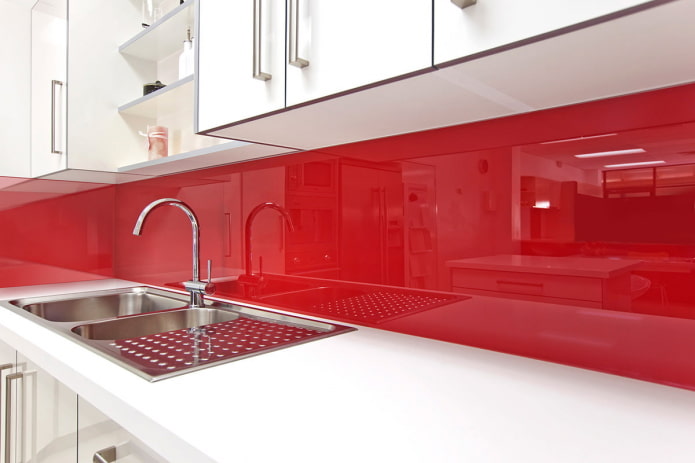
 10 practical tips for arranging a small kitchen in the country
10 practical tips for arranging a small kitchen in the country
 12 simple ideas for a small garden that will make it visually spacious
12 simple ideas for a small garden that will make it visually spacious
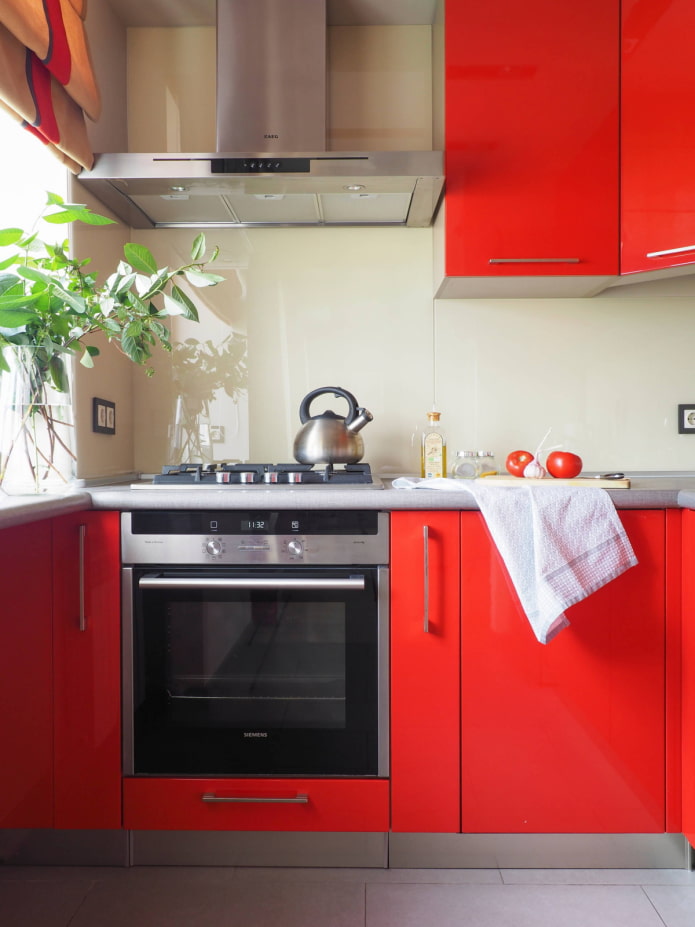
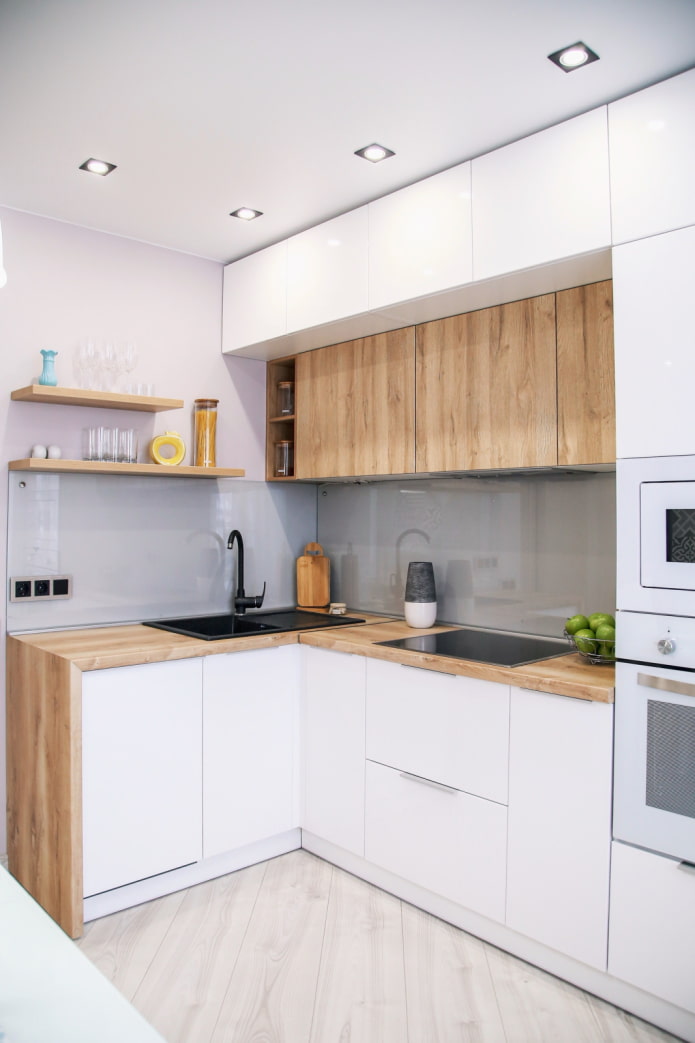
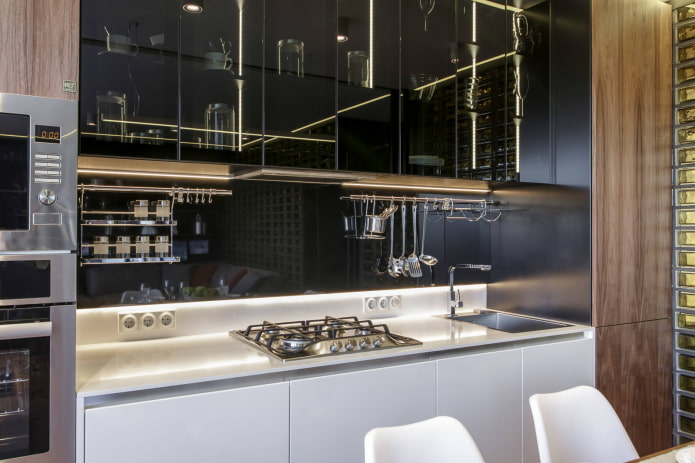
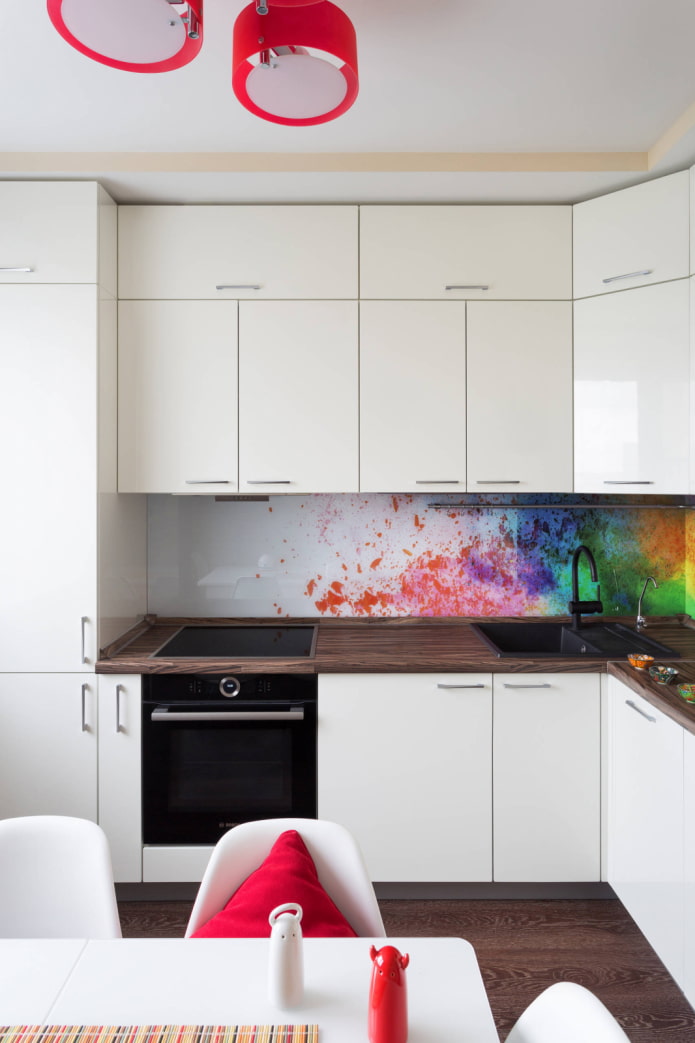
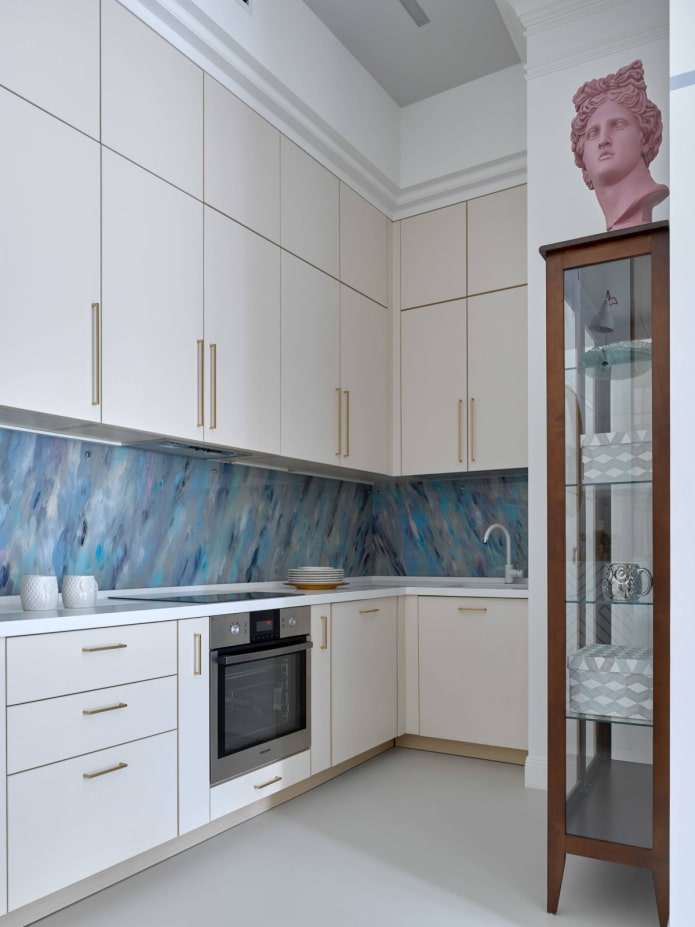
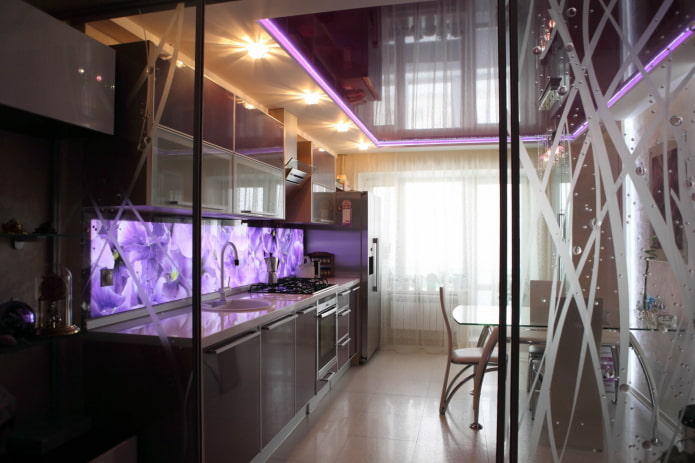

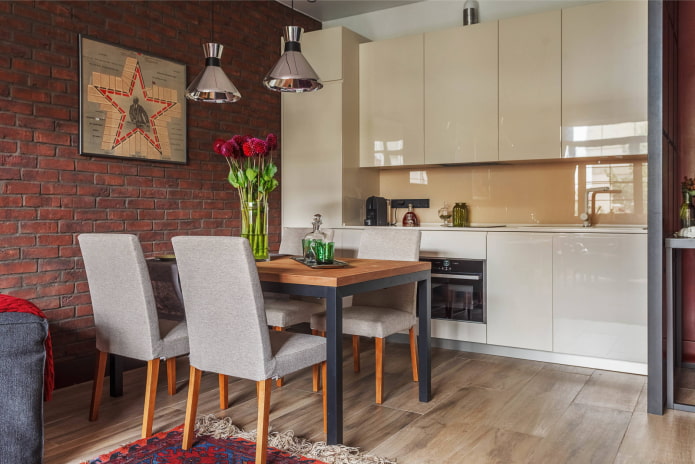

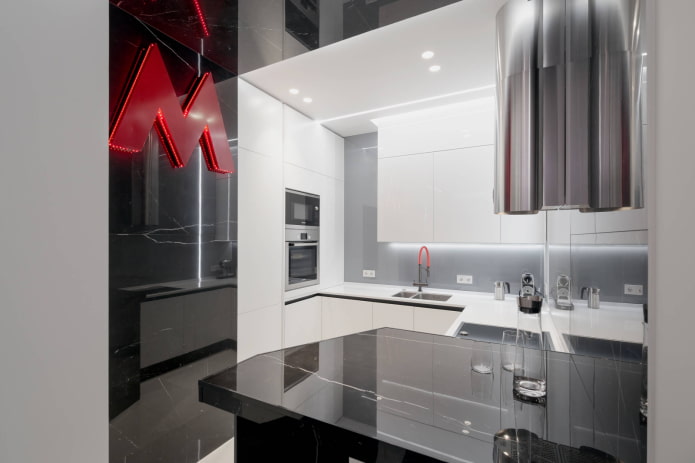
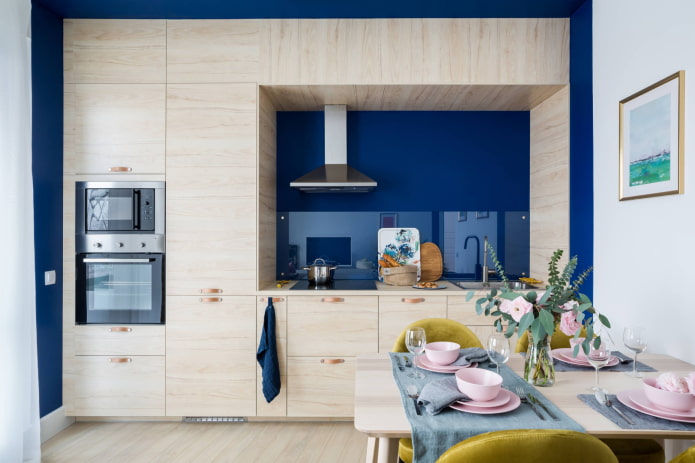

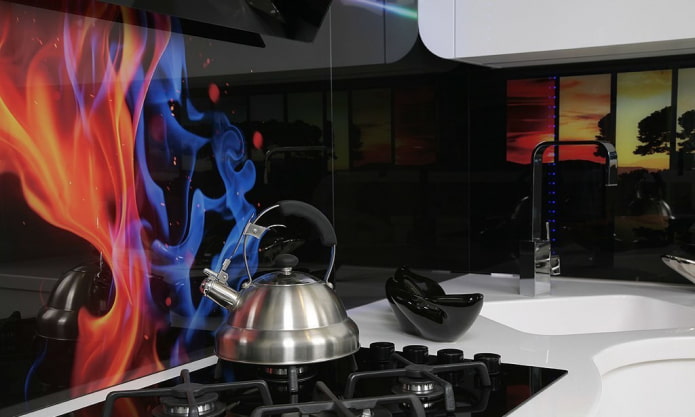

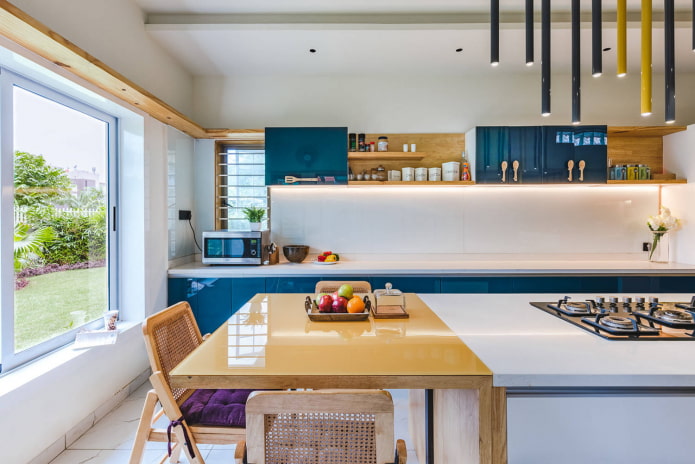
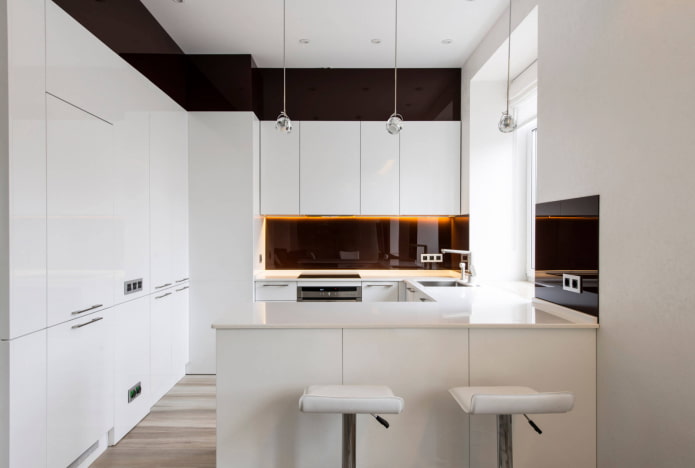
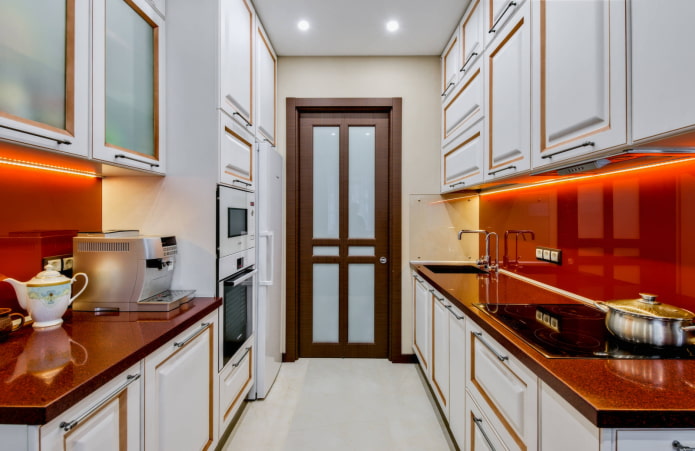
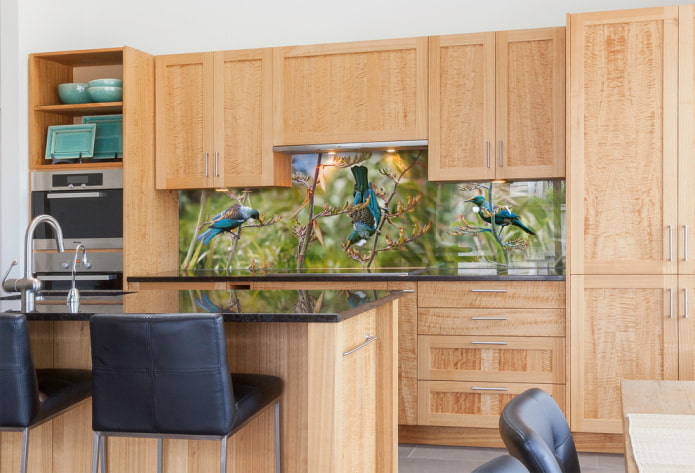
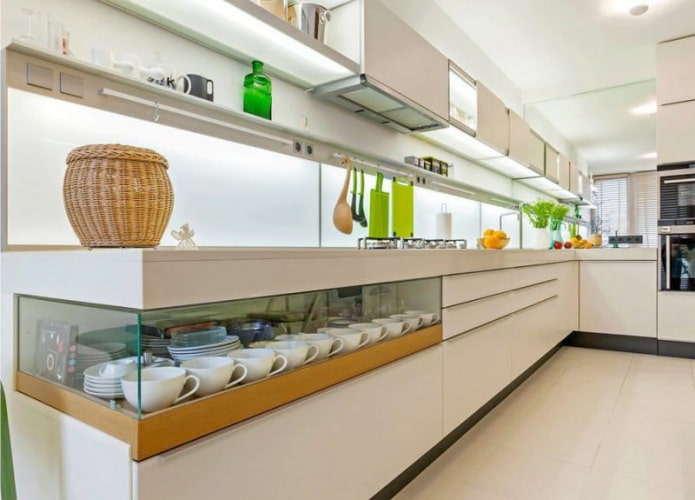
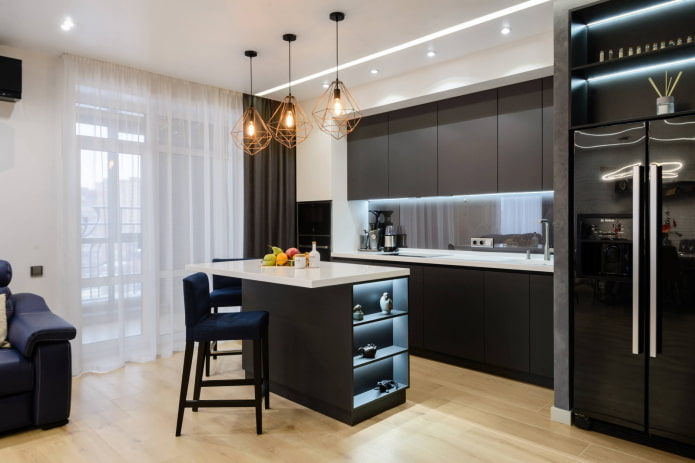
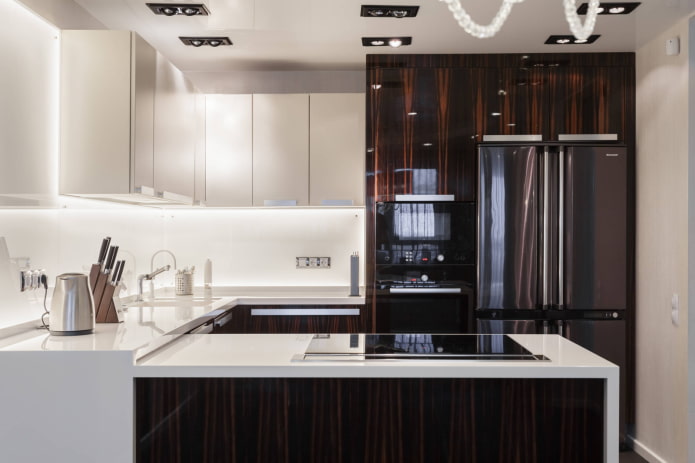
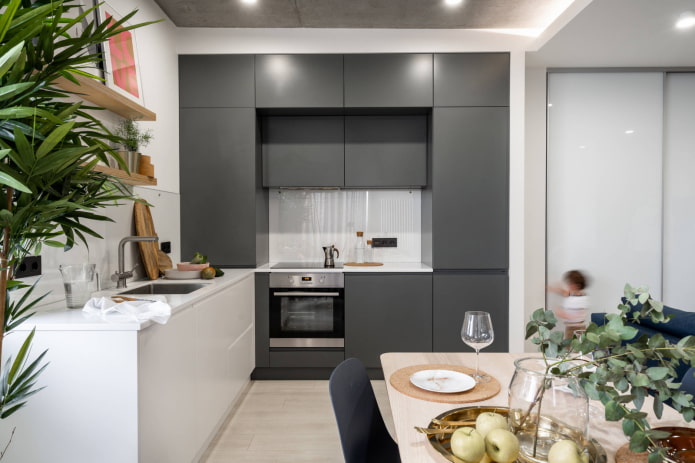

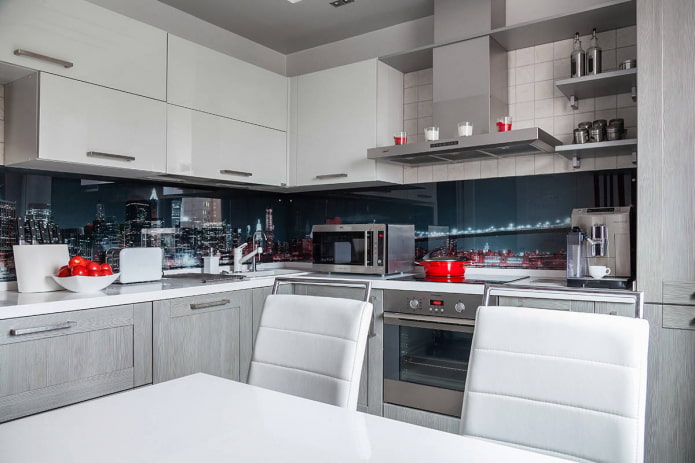
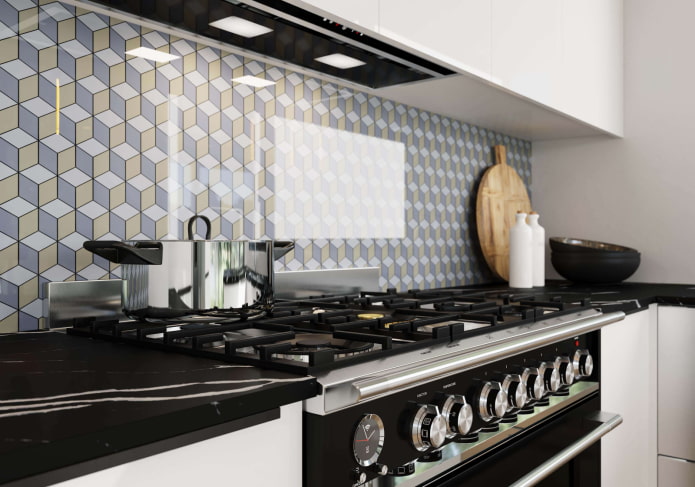
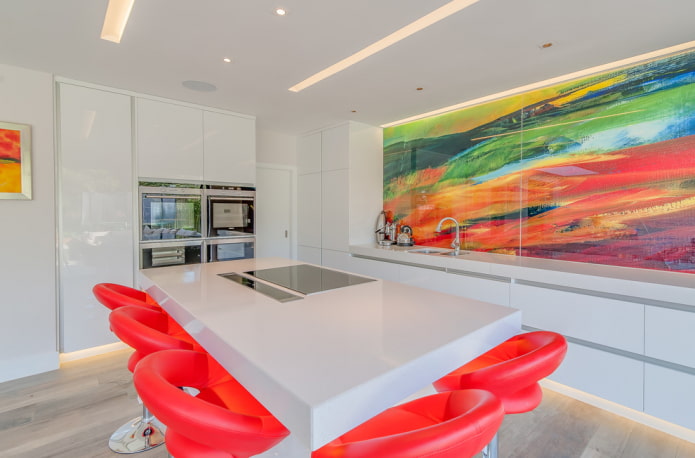

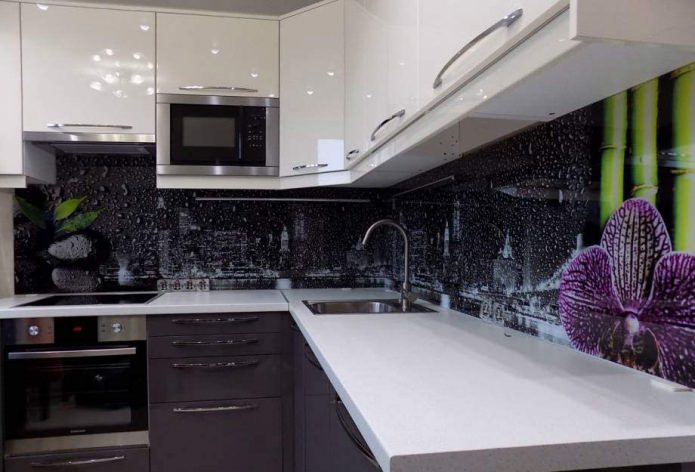


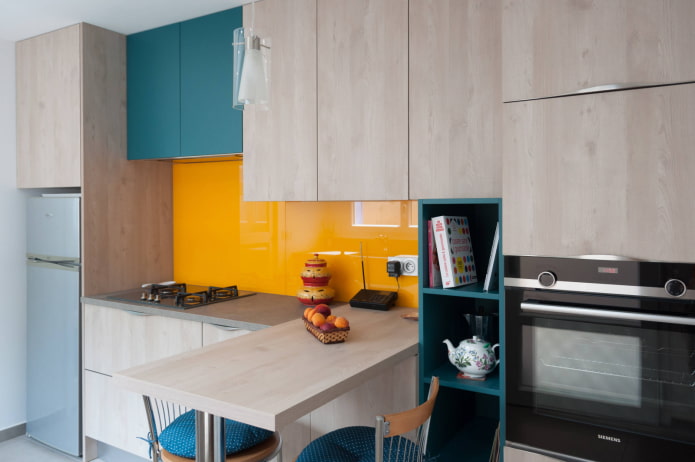

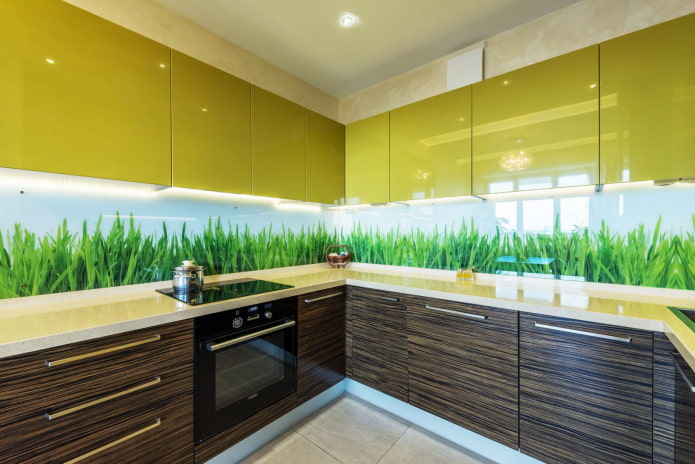
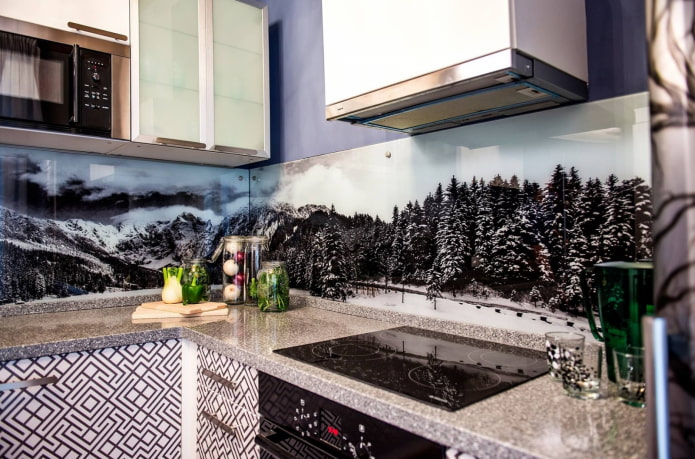
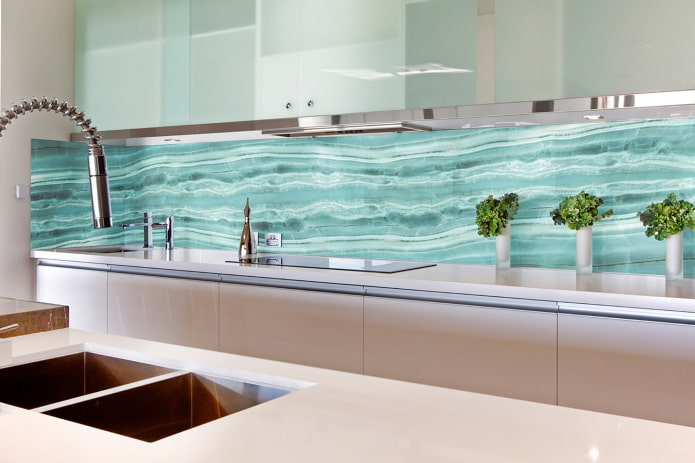
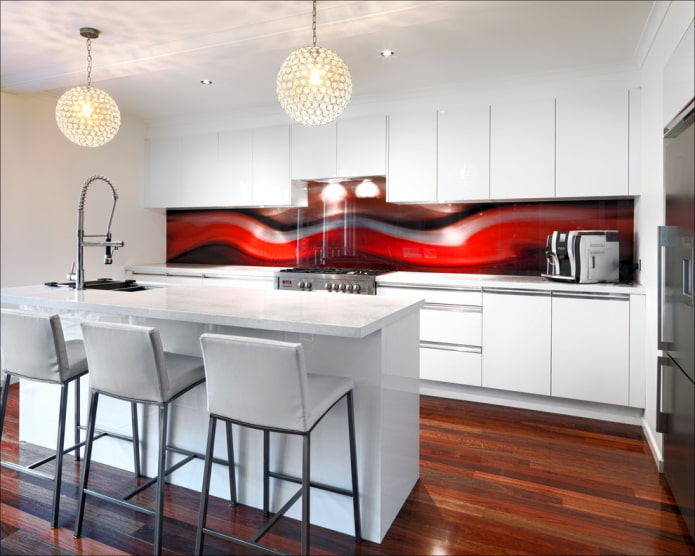
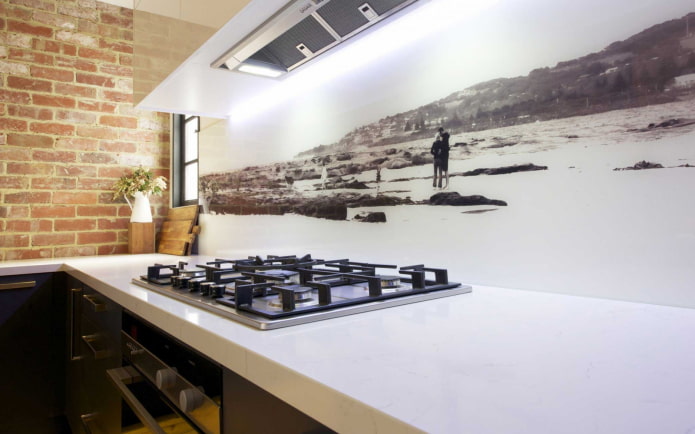
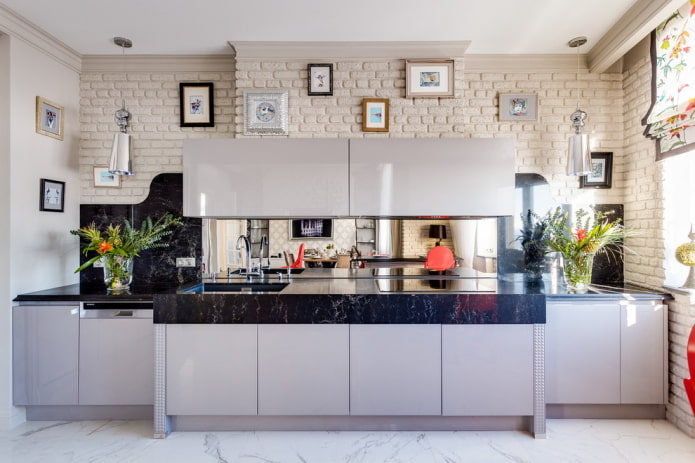
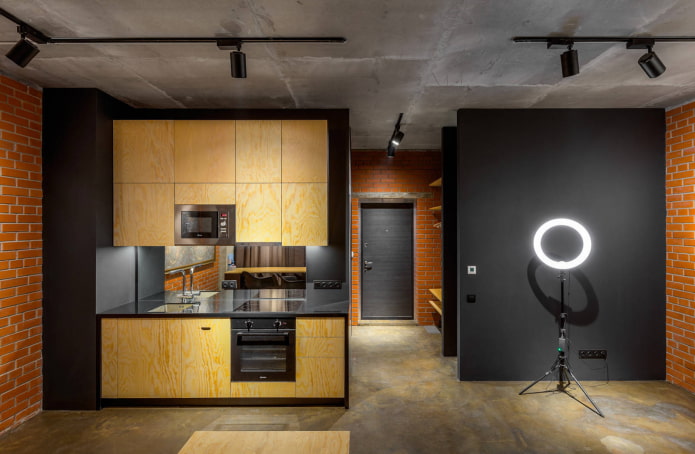

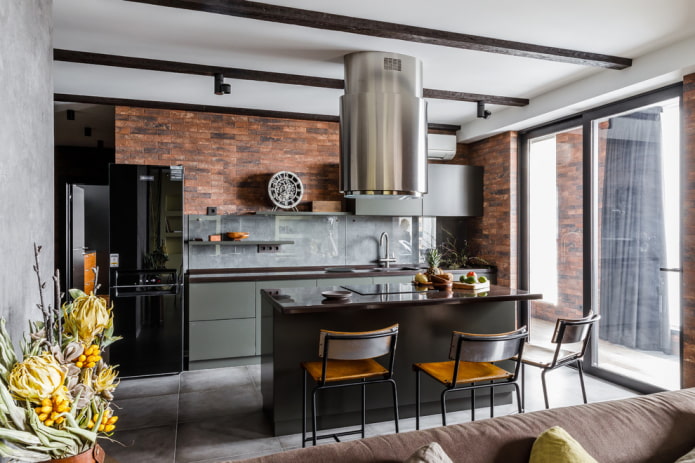
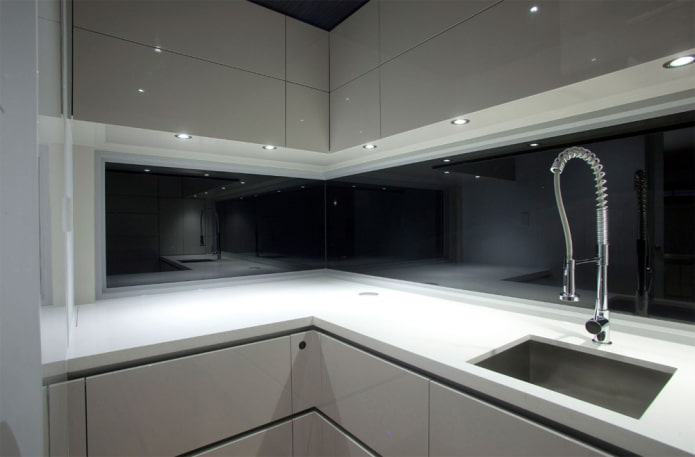

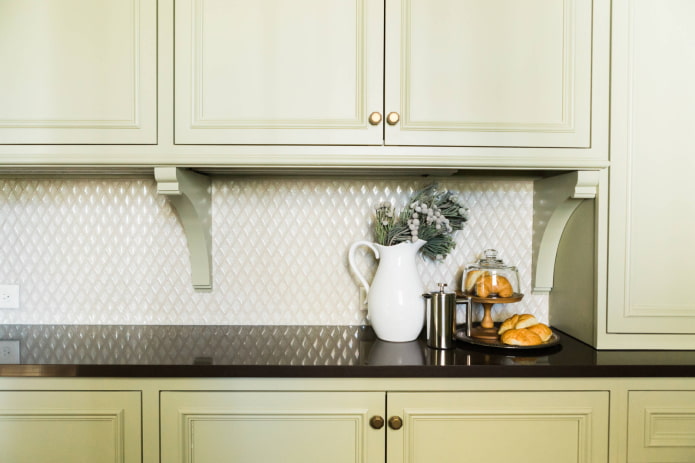
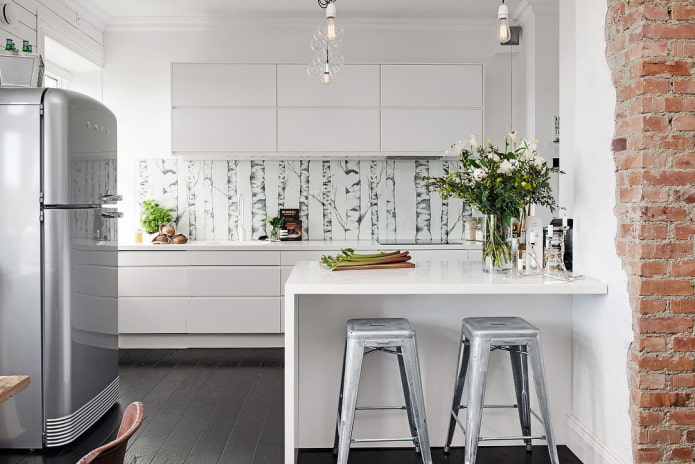
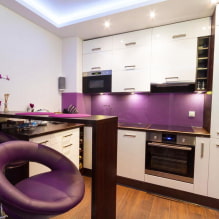
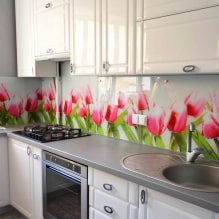
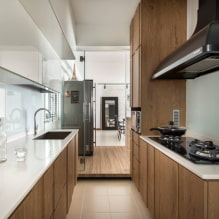
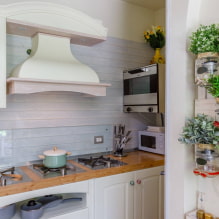
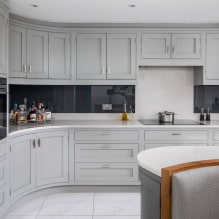
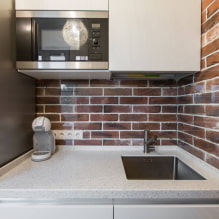
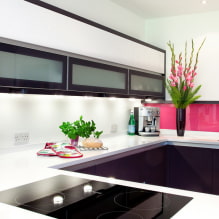
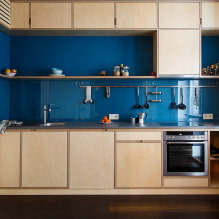
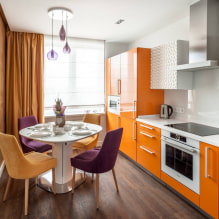
 How to choose the color of your kitchen sink?
How to choose the color of your kitchen sink? White kitchen set: features of choice, combination, 70 photos in the interior
White kitchen set: features of choice, combination, 70 photos in the interior Black set in the interior in the kitchen: design, choice of wallpaper, 90 photos
Black set in the interior in the kitchen: design, choice of wallpaper, 90 photos How to choose curtains for the kitchen and not regret it? - we understand all the nuances
How to choose curtains for the kitchen and not regret it? - we understand all the nuances Design of a white kitchen with a black countertop: 80 best ideas, photos in the interior
Design of a white kitchen with a black countertop: 80 best ideas, photos in the interior Kitchen design with green wallpaper: 55 modern photos in the interior
Kitchen design with green wallpaper: 55 modern photos in the interior